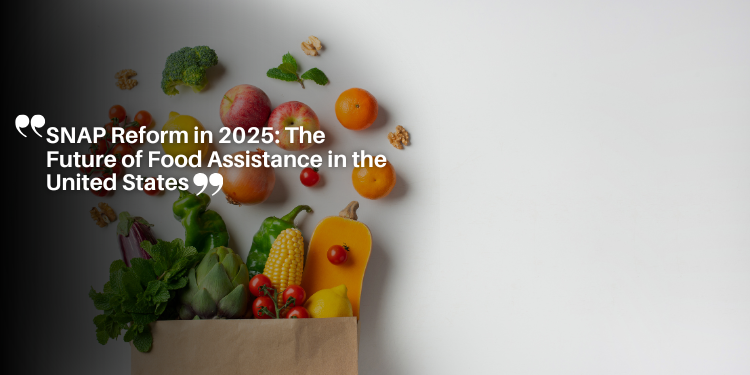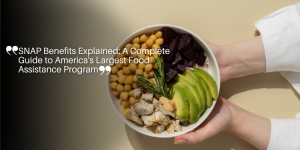SNAP Reform in 2025: The Future of Food Assistance in the United States

Proposed Cuts, New Requirements, and the Impact on Millions of Americans
In 2025, the Supplemental Nutrition Assistance Program (SNAP)—the United States’ largest food assistance initiative—is facing one of the most sweeping transformations in its history.
The proposed reform, strongly supported by former President Donald Trump, is part of a broader legislative package known as the “One Big Beautiful Bill Act,” which also includes substantial tax reductions.
While the tax cuts appeal to fiscal conservatives, the food aid changes have sparked controversy across the political spectrum.
Central to the proposed law are three critical shifts: a major redistribution of financial responsibility from federal to state governments, stricter work requirements for recipients, and a cap on inflation-based adjustments to benefits.
If enacted, these changes could significantly reduce the scope of SNAP and alter how millions of Americans access basic nutrition.
This article explores the current status of SNAP, dissects the proposed reforms, and offers a detailed breakdown of the fiscal, social, and political consequences—organized by relevant data points and expert projections.
What Is SNAP and How Does It Work?
SNAP, originally established as the Food Stamp Program, was officially renamed in 2008 to reflect a more modern approach to food assistance.
It provides monthly funds to low-income individuals and families to purchase groceries.
- Eligibility Criteria (2025 figures): Monthly income below $1,632 for individuals or $3,380 for households of four.
- Eligible Purchases: Basic food items such as vegetables, fruits, dairy, grains, and meat. Some states have sought—and received—permission to exclude sugary beverages and snacks.
Since its inception, SNAP has been a critical tool in combating food insecurity and supporting vulnerable populations, especially during economic downturns or public health crises.
SNAP by the Numbers: Where It Stands in 2025
Participation and Reach
- More than 42 million Americans currently receive SNAP benefits.
- About 22.5 million households are enrolled in the program.
- The average monthly household benefit is approximately $353.
- This equates to roughly one in eight people in the United States relying on SNAP for their food needs.
Participation peaked in 2013 with 47.6 million recipients during the aftermath of the Great Recession.
While numbers declined in the following years, the COVID-19 pandemic and inflationary pressures pushed demand back up, maintaining SNAP’s importance in 2025.

Federal Spending Cuts: $295 Billion Over a Decade
The Congressional Budget Office (CBO) estimates that the proposed legislation would reduce federal SNAP expenditures by $295 billion over the next 10 years.
Breakdown of Projected Savings
- 53%: Cost-shifting to states, requiring them to cover a portion of food and administrative expenses.
- 32%: Expansion of work requirements, leading to a decrease in eligible beneficiaries.
- The remainder: Cuts to benefits for non-citizen legal residents and a cap on benefit increases tied to inflation.
These proposed savings are framed as necessary for long-term fiscal sustainability.
However, numerous experts warn that the reduced federal support could lead to widespread food insecurity, particularly in already underserved communities.
Expanding Work Requirements: A Wider Net of Conditions
Currently, adults aged 18 to 54 who are able-bodied and childless must either work, volunteer, or attend training programs for at least 80 hours per month to continue receiving benefits beyond a three-month window within a three-year period.
| 📌 Change | Description |
|---|---|
| 👵 Age Extension | Extends work and eligibility requirements to adults aged 55 to 64 |
| 👨👩👧 Parental Work Mandate | Requires work activity for parents with children aged 7 or older |
| 📉 Limit on Waivers | Reduces state flexibility to waive work requirements in areas with high unemployment |
Cost-Sharing with States: A New Burden
Under the current system, the federal government pays 100% of food benefit costs and 50% of administrative expenses.
The proposed law drastically alters this framework by shifting a portion of the financial burden to individual states.
New Fiscal Responsibilities for States (Starting FY2028)
- States would be required to pay at least 5% of food benefit costs.
- States would cover 75% of SNAP administrative costs.
Performance-Based Penalties for Errors
States that exhibit higher error rates in processing SNAP payments would face increased financial obligations:
Error Rate Range (SNAP Payments)State Contribution to Food Costs
Up to 5% 5%
6% – 8% 15%
8% – 10% 20%
Over 10% 25%
With the national average error rate at 11.7% in FY2023, most states would be subject to the maximum 25% contribution.
Only a handful of states—Idaho, South Dakota, and Vermont—maintained error rates below 5%.
These new mandates could lead to tough budgetary decisions at the state level, potentially forcing cuts in benefits or eligibility limits.
Benefit Growth Limits: Capping Inflation Adjustments
Another significant provision in the proposed bill is a cap on annual inflation increases for SNAP benefits.
Under current rules, benefit levels are adjusted based on the rising cost of food. The cap would change that trajectory.
Forecasted Impact
- By 2034, the average monthly SNAP benefit would be $15 less than it would have been under inflation-indexed growth.
- For families already living near the poverty line, this reduction could exacerbate food insecurity and financial strain.
Many economists warn that food inflation, already a persistent issue due to global supply chain disruptions, may further erode the purchasing power of SNAP recipients unless benefit levels keep pace.
Restrictions on Legal Immigrants
The legislation also targets non-citizen legal immigrants, proposing to eliminate benefits for an estimated 120,000 to 250,000 individuals.
These immigrants may reside legally in the U.S. but lack permanent resident or citizenship status.
Removing their access to SNAP, they contend, would worsen food insecurity among immigrant populations and damage community well-being.
Narrow Passage and Uncertain Senate Future
The House narrowly approved the bill by a margin of 215 to 214, highlighting deep divisions even within the Republican party.
All House Democrats voted against the measure.
A similar outcome is anticipated in the Senate, where Republicans hold a slim majority with 53 out of 100 seats.
Several moderate GOP senators have expressed concerns about:
- Cuts to Medicaid and food assistance.
- Increased costs for states.
- Potential impact on the federal deficit despite tax cuts.
Senate leaders may need to amend the bill to secure the necessary votes.
The debate is expected to intensify as the July 4 deadline approaches—Trump’s preferred date for the bill’s final passage to commemorate U.S. Independence Day.
What’s Next? A Decade of Change Begins
If the bill passes the Senate and is signed into law, its provisions will be phased in gradually:
- 2026: Work requirement expansions take effect.
- 2028: State cost-sharing begins.
- 2034: Full impact of capped benefit growth becomes evident.
This timeline gives states and stakeholders time to adapt, but also raises concerns about policy uncertainty, implementation challenges, and legal battles that may arise in response to such dramatic shifts in federal social policy.
Conclusion: A Defining Moment for SNAP in America
The 2025 reform proposal for the Supplemental Nutrition Assistance Program marks a pivotal turning point in the United States’ approach to public welfare.
With billions in savings projected, new restrictions proposed, and millions of lives potentially affected, the debate is not just about budget numbers—it is about the nation’s priorities regarding hunger, poverty, and shared responsibility.
Whether this legislation ultimately succeeds or not, it has already reshaped the conversation around food assistance, placing the future of SNAP—and the families who depend on it—firmly in the national spotlight.







